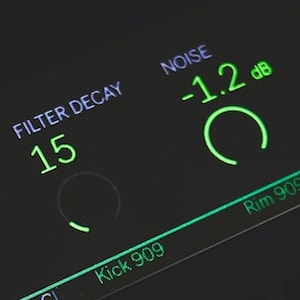take form: Idiom Meaning and Origin
What does ‘take form’ mean?
The idiom "take form" means to assume a physical or visible shape or appearance, often used to describe something becoming tangible or concrete after previously being abstract or undefined.

Idiom Explorer
The idiom "turn into" means to undergo a transformation or change, typically resulting in becoming something else or adopting a different form or state.
The idiom "take for granted" means to not appreciate or value something or someone because it is always present or easily available.
The idiom "take cover" means to seek shelter or protection from imminent danger or harm. It implies the need to find a safe place to shield oneself from potential threats or hazards.
The idiom "take a wife" means to marry someone, referring to the act of a man entering into a marital relationship with a woman.
The idiom "take a turn" means to change direction or course, often unexpectedly or without prior planning. It can also refer to undergoing a transformation or experiencing a shift in circumstances. This phrase is commonly used in both literal and figurative contexts.
The idiom "take a stand" means to publicly express one's opinion or position on a certain issue, often in a bold and assertive manner.
The idiom "take a picture" means to capture a moment or scene using a camera or smartphone. It can also imply immortalizing a memory or preserving a visual record of something noteworthy.
The idiom "take a look" means to examine or observe something briefly or quickly.
The idiom "step out" means to leave a familiar or comfortable situation to try something new or take a risk. It can refer to physical actions or a change in behavior or attitude.
Deciphering Embodied Essence
the idiom "take form" is a versatile expression that can be used to describe both figurative and literal transformations. It captures the concept of something becoming tangible or concrete, whether it be the development of an abstract idea or the physical manifestation of an object. The idiom "turn into" is closely related to "take form" as it conveys a similar idea of transformation. When something "turns into" something else, it undergoes a change and assumes a new form. For example, a caterpillar "turns into" a butterfly, or a small sapling "turns into" a tall, sturdy tree.
Another related idiom is "come to life," which emphasizes the idea of something becoming animated or alive. This idiom can be used to describe the moment when an idea "comes to life" and becomes active or operational. It can also refer to the moment when a previously inanimate object or scene suddenly becomes lively or energetic. For example, a dull room "comes to life" with vibrant colors and decorations, or a fictional character "comes to life" in the imagination of the reader.
The idiom "come into being" has a similar meaning to "take form" and can be used interchangeably to describe the process of something coming into existence. When something "comes into being," it is created or brought into existence. This idiom can be used to describe the birth or creation of ideas, inventions, or even entire civilizations. For instance, the internet "came into being" in the late 20th century, forever changing the way we communicate and access information.
Another related idiom that connects to "take form" is "in shape". This idiom is often used to describe someone or something that is physically fit or in good condition. When someone is "in shape," they are healthy, strong, and physically prepared for a specific task or activity. This idiom can also be used to describe objects or systems that are functioning well and are in good working order. For example, a car that is well-maintained and regularly serviced is said to be "in shape."
Lastly, the idiom "shape up" can also be related to "take form." This idiom is used to suggest that someone or something needs to improve or change for the better. When someone is told to "shape up," it means they need to make an effort to improve their behavior or performance. This can apply to both individuals and groups. For example, a coach might tell their team to "shape up" if they are not performing well, or a supervisor might give a warning to an employee to "shape up" their work habits.
Overall, the idiom "take form" captures the essence of transformation and development. It can be used to describe both the figurative and literal evolution of ideas, concepts, and physical objects. When combined with related idioms like "turn into," "come to life," "come into being," "in shape," and "shape up," it enhances the overall understanding of the process of transformation and adds depth to the language. So next time you witness something "taking form," remember that it is a remarkable process that encapsulates growth, change, and the endless possibilities of what can be.
Example usage
Examples of how the idiom take form can be used in a sentence:
- The artist's vision began to take form as she sketched it out on the canvas.
- After months of planning, the construction project finally started to take form with the laying of the foundation.
- I could see the idea taking form in her mind as she explained her concept to me.
Analysis:
The idiom take form is often used to describe the process of something becoming visible, tangible, or clear. It suggests that an idea, plan, or concept is transitioning from a conceptual or abstract state to a more concrete or physical manifestation.
In the first example, it is used to indicate the artist's vision becoming visible as she physically represents it on a canvas.
In the second example, it implies that the construction project, which was previously just a plan, started to become a physical reality with the laying of the foundation.
The third example highlights how an idea can develop or grow more defined in someone's mind, becoming more tangible as they explain it to others.
More "Origin" idioms



